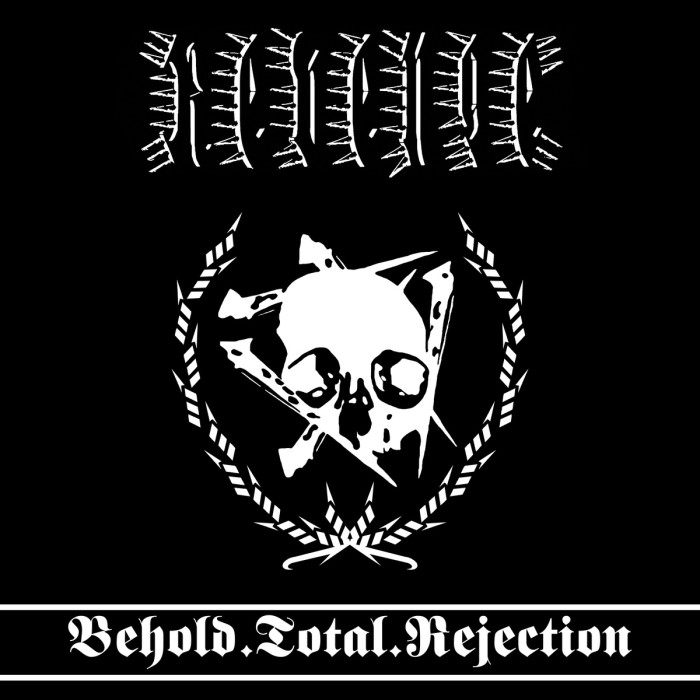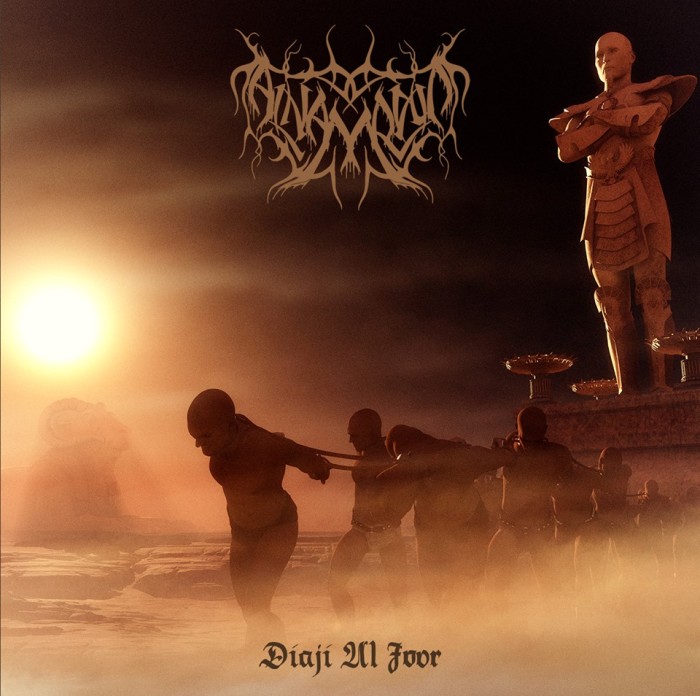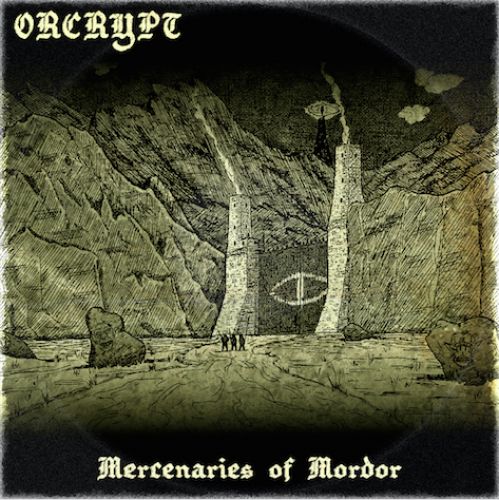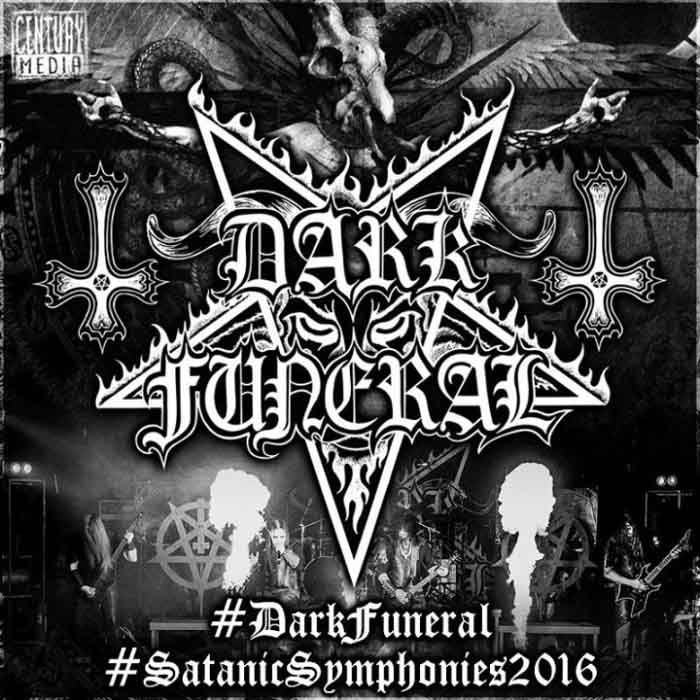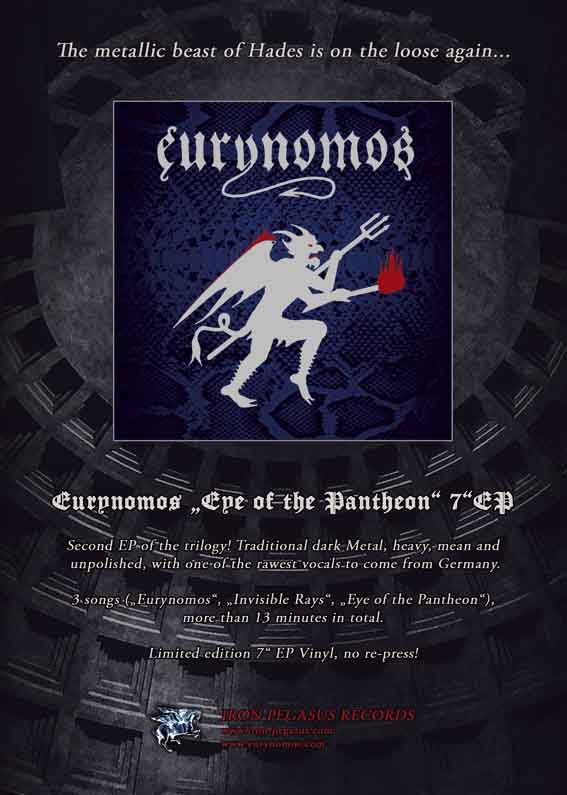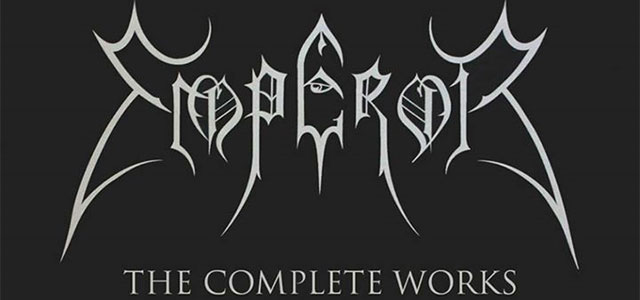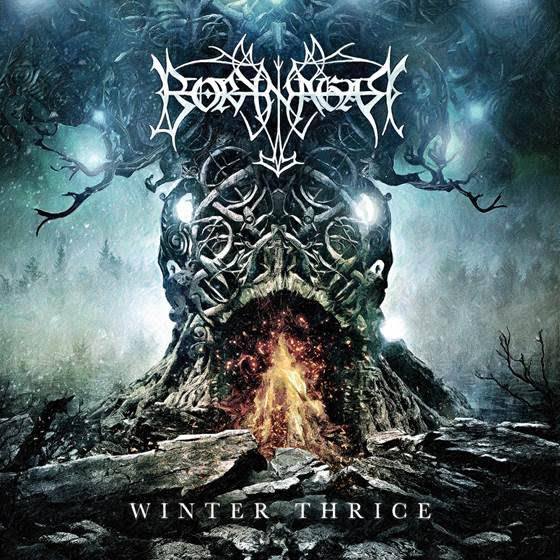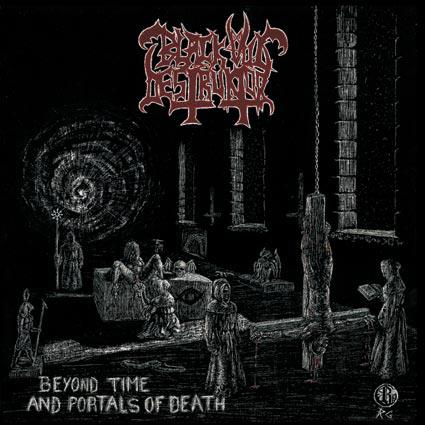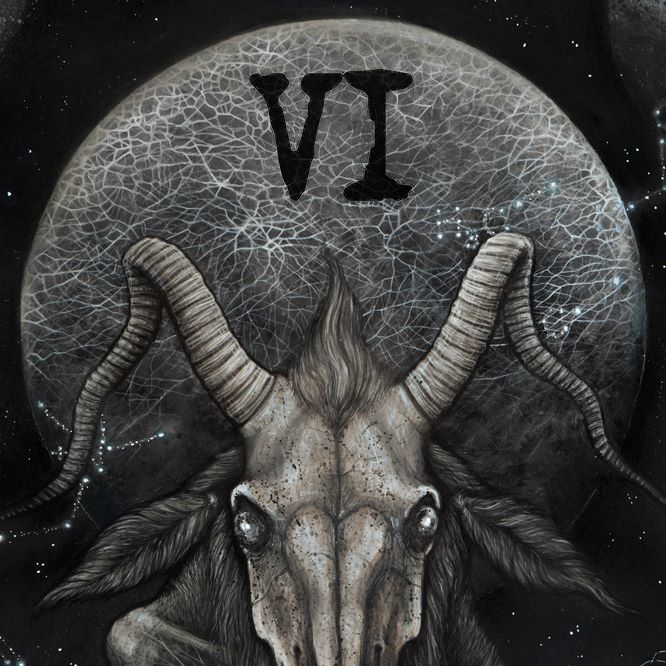
Review by “Blackcat”
A swirling miasma of ethanol greeted us upon the last Black Flames of Blasphemy, a festival held this past November in the picture perfect setting of Helsinki. The night before the scheduled Warmup event, I flew into town and made a beeline for Bar PRKL, a space named for the Finnish profanity likely exposed to most readers of this site from the comedy album released by the quirky Impaled Nazarene.
Those of us who live in less utopian societies than Finland often wonder why the idyllic nations in this area are able to produce such incredible music. “Finnish people can’t admit that they have goodness,” chuckled ApeX lead guitarist Arttu, an incredibly young thrash band who were in the process of violating the few revelers in attendance at PRKL that night. Indeed, as such documentaries as Until the Light Takes Us strove to illustrate, perfection has cast a pall on everything in much of the remaining non-disintegrating portions of the globe. It is almost as if the human condition is predisposed to strife, and that ostensibly perfect societies lead the average citizen to turn to perversion to bring balance into life – thus possibly explaining why places like Germany and Japan end up with penchants for coprophilia and bestiality.
Also present at PRKL were two members of Sammath, who descended upon Helsinki specifically for a dose of damage to tympanic membranes and liver. Hundreds of euros worth of alcohol consumed before the festival even started explains the reduced quality of the writing herein. Any complaints may be directed towards those two for rendering me quasi-unable to write let alone think. The fact that the screed was written on a tortured local keyboard and the reviewer is used to a U.S. issued one didn’t help a whit either.
We older, more cynical types were delighted to find youth as enthusiastic about all things metal as ApeX, and though 17 year olds themselves were unusual in their devotion, Helsinki was remarkable for having metal and punk culture literally everywhere one went. Taxis, restaurants, public toilets, airport shuttles and hotels all had a notably worthwhile theme of fine harder music. This trend did display its cellulitic underbelly in billboards featuring nerdwank outfit, Nightwish, hawking air-brushed, wet-dream-inducing Caucasian female thighs and an exorbitantly expensive line of bling suitable for teenagers in wealthy northern countries with too much pocket money for their age.
But I digress. Our focus should be on the festival, and that was one thing that the festival organizers seemed to have done quite well over the years. Black Flames of Blasphemy has been a fairly well attended sub-underground festival, running on and off for the last six years. The early years were vomited forth in a now rededicated cathedral in central Helsinki, and whilst the festival has moved on to less atmospheric surrounds, the organizers’ devotion to only the most rabidly necrotic bands is no small feat. Originally launched by Kold Reso Kult, the festival seems to have taken on a raison d’etre of its own over the years and drawn numerous acts known for playing a very limited number of shows such as Antaeus and Blasphemy. The scarcity of many of the acts led to a non-trite sense of novelty that led to a triangulated feeling somewhere between reverence, arrogance and pride for having been one of the few to have seen such veritable narwhals of the musical world.
This year was allegedly the last, and whilst threats of this sort are often made in the world of underground metal (only 120 copies to be made in hymen blood, and then no more ever again NO CORE, NO TRENDS, . . . until we release it in vinyl again in a few months on an even more ridiculously limited run), there seemed to be little threat that the crowd did not lend it a credence as evidenced by the flagrant hedonism on display at virtually every level of the setting. Nosturi, as the venue was called, must have some connection to vile ‘rhoidrock band HIM, as their logo appears in the lighting-rig and several other locations in the building; but detestable associations aside, the venue was actually quite accommodating.

This tattoo is not completely and utterly unrelated to the HIM logo.
The staff at Nosturi were kind and courteous, putting up with the sort of reprehensible behavior that one would expect from a down syndrome five-year-old on amphetamines. Indeed, this seemed to be true for most Helsinkians, who were never seen to act heavy-handedly despite the questionable behavior of many of our associates. The drinks were of course ridiculously expensive, as are all things in Finland, (3 euro for the coatroom, 1 euro to retrieve said coat!?!?) but that did not stop the cohort from literally drinking the place into oblivion every single bloody evening.
Black Flames of Blasphemy VI should be noted to have featured the most solid lineup in the history of the festival. Indeed, more than a few have been solidly praised on this site amongst others for their solid contributions to the overall gestalt of extreme metal achievement in the prime years of the scene. Still, it was uneven. As has been reiterated time and again on this site, 99% of metal is absolute shit, and bands like Blackwinged embodied the nadir of human endeavor. The silver lining to this is that more time was made for sightseeing / mind abusing opportunities.
On then to the reviews as they were penned by this reviewer in the classic manner: via sweat, ink and beer soaked notebook clutched between pumping fists, and the contributions of the stalwart brood of iniquitous, abusive pundits who wandered in and out of the fuzzy borders of the violence ringing in his ears.
DAY 1: WARMUP – Grunt / Bizarre Uproar / Ride for Revenge / Obscure Burial / Deströyer 666
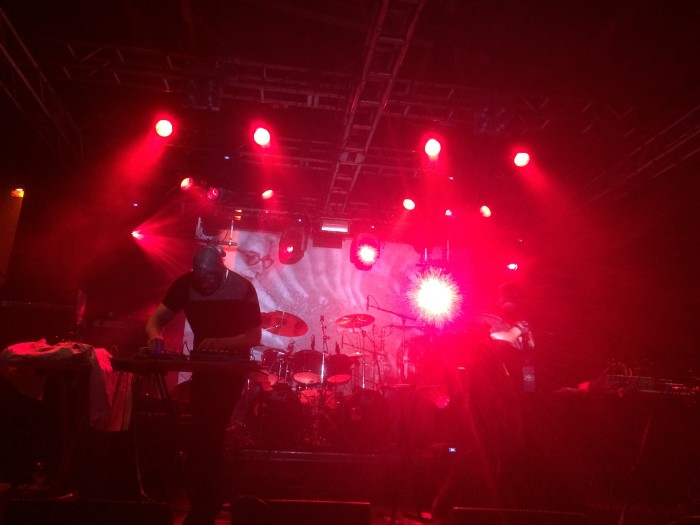
Grunt in concert
Grunt: Said to be a side project of Clandestine Blaze / Northern Heritage sociopath, Mikko Aspa, Grunt kicked off the “Warmup” to the festival by doing quite the opposite. Monotonous, repetitive pulses punctuated by amateur feedback made me wonder why people are still drawn to artrock. Images of highly disturbing matter lent the show a more tolerable air, but pudgy white guys in bondage masks barking at random made me conscious of guarding my asshole too much to enjoy the show. Over all, Grunt in concert were a bit like listening to your fey roommate having an orgy whilst listening to Godflesh on a broken turntable next door. The playing of the belt sander on the thunder machine was an interesting flare, but with all due respect, Mr. Aspa should keep his day job.
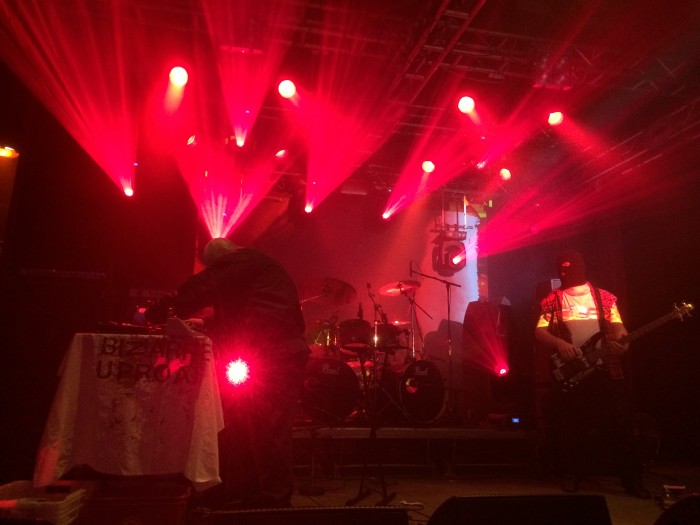
Bizarre Uproar
Bizarre Uproar: Seems like Grunt just changed into their street clothes and got fatter. A Dutchman near me noted that this band gave him earAIDS. This drove us back to the bar as it wasn’t nearly so interesting as twenty well executed shots of salmiakki licorice alcohol. Cirrhosis is always preferable to aural loss. Look not for the successors to the great Throbbing Gristle here.
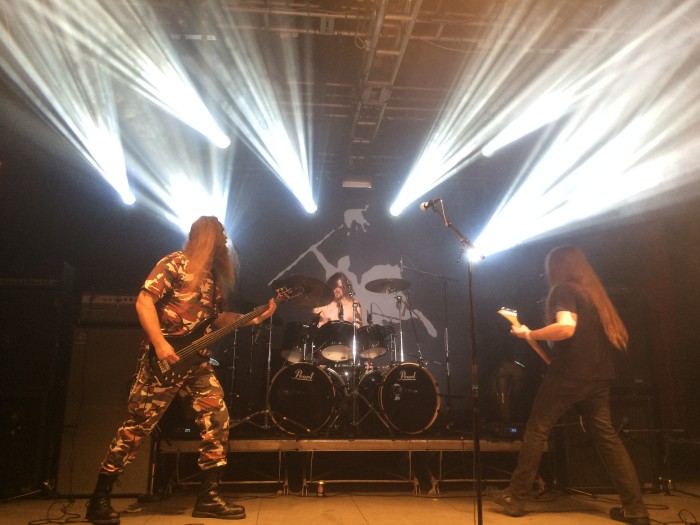
Ride for Revenge
Ride For Revenge: Repetitive, sludgy, and coming off like Goatlord, but not quite as inspired, RfR still brought the focus of the show more firmly in a metal direction. The band’s stage presence was directionless, and at times reminiscent of one of those hunting dioramas at a second rate sporting goods store.
Obscure Burial: The writing in my notebook point is smeared by unknown fluids for this act. What is legible bleeds through as follows: “A triple barbed fishhook – much more focused than any other band thus far. An Australian nearby wrote this:
“We walked up to the upstairs area and there were cocks everywhere. It was gay as shit! It was like listening to Kreator in 99! Fuck that shit.”

Another picture of Ride for Revenge, in case you’re into that sort of thing.
This was followed by multiple images of genitalia with wings.
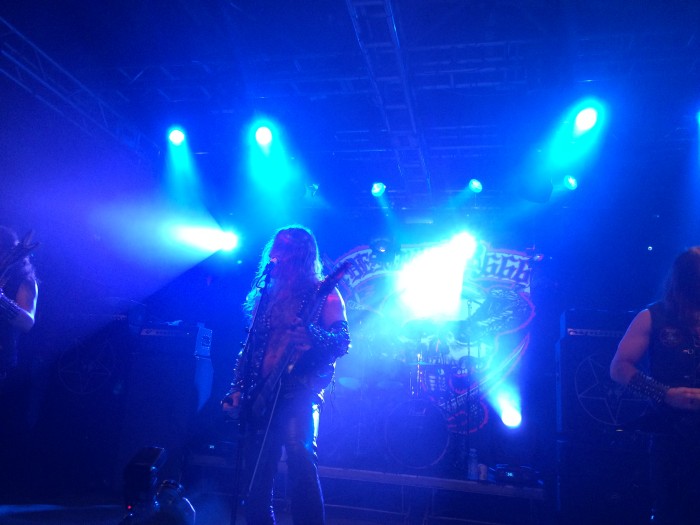
Deströyer 666
Deströyer 666: Maligned in some quadrants for playing in a thrashy, hook-flaying style that may have contributed to the formation of “war metal,” and in others for K.K. Warslut’s obnoxious attitude, Deströyer 666 were a true joy to behold. Filled out by an entirely new band, K.K. and the boys managed to finally shake the torpid audience out of their inertia. Tracks such as the shocking “Raped” gave the listener the same queasy pleasure that one derives from listening to the Fearless Iranians from Hell’s “Blow up the Embassy.” “I am the Wargod,” and “Black City,” were played with more chin-jutted pride and beauty than on the vinyl, whilst the ethereal “Trialed by Fire” raised the hair on necks and the spirits of the dejected. Deströyer even launched a kerosene-soaked rendition of Motörhead’s “Iron Fist,” tipping their chrome-studded hats to Phil “Philthy” Taylor’s passing earlier in the day. All in all, Deströyer 666 certainly made showing up to the festival a night early well worth it, purging our ears of much of the fluff which preceded them.
Day 2: FRIDAY 13th – Blackwinged / Vampire / Hell Militia / Xibalba / Mayhemic Truth / Midnight / Blasphemy
Blackwinged: Guest reviewer – Vlad, Russian virus and vodka enthusiast, and general psychopath: “Blackwinged? FUCK THEM ALL! Suck my fucking wrinkled dick.” It may be said that they weren’t a favorite amongst the crowd.
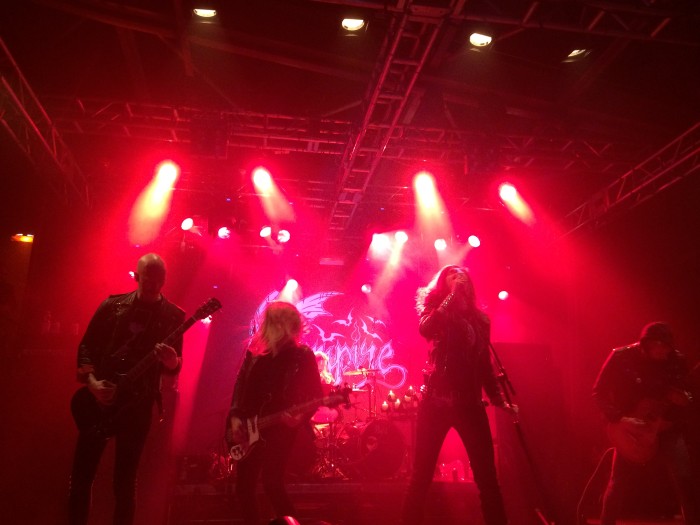
Vampire
Vampire: Concho belted, pretty boy Aerosmith antics of the lead vocalist Command aside, it has to be said that Vampire were one of the big surprises of the show. With an approach akin to Kreator’s “Extreme Aggression,” Vampire managed to transcend the Italian horror-film shtick of their stage set, album art and, yes, band name to actually convey the attraction of mortification. Although I was unfamiliar with the tracks, the music whelmed in a not untasteful rock format that seared themes presumably of the undead into the conscious. Channeling Riccardo Freda in the best ways possible, Vampire delivered an entertaining show that was only slightly marred by the less-cocksure presence of the string section.
Hell Militia: 666 – no report – 666
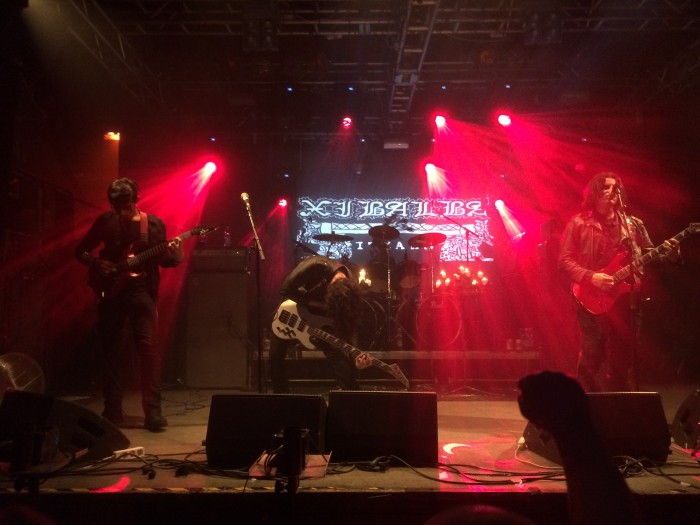
Xibalba (Editor’s note: It’s a toss-up as to whether “Sac Ibteelob Cab” or “Sign of Eastern War” is the better song. One of the more trivial debates in this world, though.)
Xibalba: Undeniably shitty drum solos and crude corpse-paint aside, Xibalba stood as one of the zeniths of the festival. These heroes of the second wave of black metal came on with a garage band sincerity that outshone the more highly polished acts throughout the rest of the evening. Thank Satan for this eager aural feast! Tracks like “Sign of Eastern War” and “Sac Ibteeloob Cab” were executed with a grim clarity that were occasionally missed on the original disc. Young new band members injected an off-kilter virility into the music that is essential for such an ambitious project.
Mayhemic Truth: Best known for changing monikers as often as John “Cougar” Mellancamp, and for many of the same shitty dishonest reasons, Morrigan were cut from the same overrated Kraut-tripe, kvlt-as-fvck cheesecloth as their vacuous countrymen Moonblood. In the 90s before MP3s made the obscure-kvlt fad obsolete, I was of the brood vainly attempting to find releases by this act . . . only to be astonished by how over-hyped they were when I finally heard them. Jeffemic Truthship did not fail to disappoint by disappointing with hackneyed black metal cliché after hackneyed black metal cliché. Stay obscure, White Stripes of kvltmetal, so that the rest of us don’t have to hear your sorry excuse for music.
Midnight: This reviewer was looking forward to some sort of decent blackened speed akin to Sodom, and was bouncing off the walls for some old school headbanging. Unfortunately, I wasn’t much impressed, so gave the job of review again to the ruthless peanut gallery around me: “nice thrash. ßit’s not, so fk off! Cheap ass trash. Fucking bollocks!!! Boring. It’s not even midnight assholes. They started at 11:45 – midnight my arse!! Midshite!!”

Blasphemy performs?
Blasphemy: Blasphemy’s terrifying Cro-Magnon antics delineated why the genre of black metal flourished for one brief, outstanding moment back at the fall of the Soviet Empire. The Canadian masters of knuckle-dragging avant-garde horror imprecisely dissected the audience as a claw hammer muddles and pulverizes the veiny membranes of a victim’s genitals. While the Ross Bay maniacs may never have quite reached the spacey brilliance of their Finnish protégés, Beherit, the “organized chaos” of their technique was matched that night only by the gunfire lighting up stadiums in Paris 2,000 kms away. Tracks such as “Goddess of Perversity” were executed with an intensity reminiscent of some of the more hyperactive Discharge tracks, and intros were faithfully inserted without a hint of humor. Photos attempted at short range during this show mostly consisted of purple blurs and the back of brutarian ham-hock elbows. The show also illustrated again why Blasphemy have only ever put out two real efforts (yes, I know that there are technically three, but come on – they’re basically fifteen minute punk affairs). The band made their contracted dynamo statement of grunted, jack-booted hate in a blood-clot of chains, crudely applied paint and beer-gutted belches. After forty insanely punishing minutes, the Helsinki authorities carted them off to their respective cells in solitary confinement where they belong.
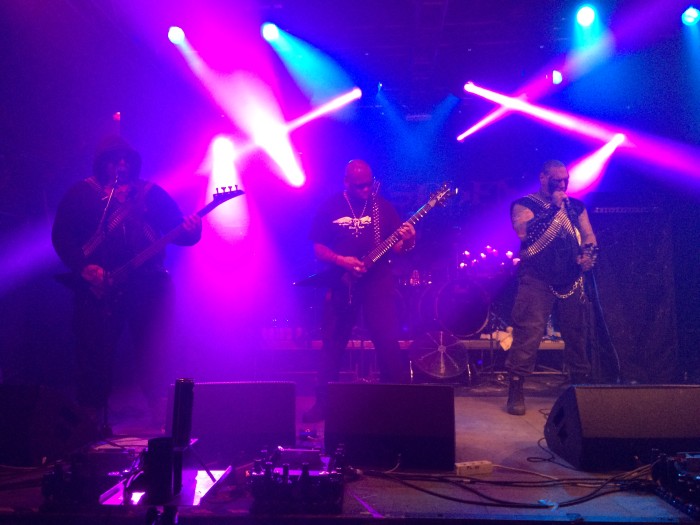
Blasphemy performing, this time with a more competent photo.
DAY 3: Satanic Warmaster / Infernal War / Irkallian Oracle / Funeral Winds / Goat Semen / Varathron / Mysticum
Satanic Warmaster: Written by a drunk Finn: HAISTA VITTU VITUN HUORA KUSIPĀĀ, IME MUNAA JA KUOLE! SAATANA LLINEN SOTA HERRA NY LOPPU SAHTI. PRIEKĀ, NO LATVIHAE. LAI TEV LABA DZIVE PRIEKS TEVI SATIKT. Actually, those last couple of phrases might be in Latvian.
Infernal War: 666 – No report – 666
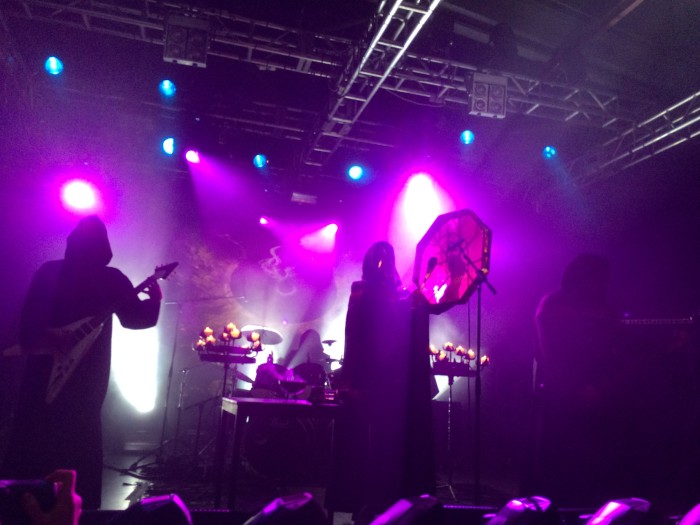
Ikrallian Oracle. Check out the tambourine.
Irkallian Oracle: I really wanted to hate this band. They are so phenomenally over the top. A bunch of ring-wraiths holding sparkly tambourines and bells. Faces masked by silver sheets. The kind of accouterments and flashy hocus-pocus that one would expect from a second-rate Ed Wood movie. And yet, the band was enigmatic. Themes held together throughout the whole concept of a track, cycling back from start to finish to start again, alpha and omega encompassing a solid core. The mystery behind the act was far more compelling than with more gimmicky acts that have been abused on these pages. This band is what GHOST wishes it was. I will be interested to pick up the album to see whether the whole disc sounds as good as it did live.
Funeral Winds: See: Mayhemic Truth. Or just about any Xerox copy black metal.
Goat Semen: Came off as a kind of second rate bully boy Blasphemy. Sure, they have cleaner riffs from time to time, but do they convey the same core of absolute spinning disgust and pummeling loathing? Perhaps it’s just that Blasphemy are so much more familiar from having been played time and again . . . or that they developed this genre, and that anything else emulating it is just that: a plastic reproduction, no matter how faithfully copied.

More Blasphemy. This time, their crumpled set list.
Varathron: For almost three decades these innovative masters of crawling necrotic horror have forged timeless odes to their Hellenic ancestors. Rivaled in their excellence and originality in Greece perhaps only by the great Necromantia, Varathron have been criminally overlooked by basement-dwelling pseudonymed fanboys more interested in the likes of obscure releases by Moëvöt than incredibly well developed music that perfectly emotes the Dionysian strophe and anti-strophe of ancient cultic form. Varathron took the stage with more presence than could have been imagined from some of the cheesier rock mantras that they fell prey to in the early 2000s, and launched into a barrage of tracks from across their storied career. Recent(ish) drummer Haris is an amazing addition to the band, and one that this reviewer wishes had been present on classics such as “His Majesty at the Swamp,” which suffered from drummachineitis. Guitarist Achilleas decimated the audience much like his warrior-hero namesake, along with twin slayer in savagery Sotiris and recently added bassist, Stratos. Varathron reached their climax with the amazing “Kabalistic Invocation of Solomon,” where band high priest Necroabyssius read from Dogme et Rituel de la Haute Magie, in a huge tome edition, green lights all ablaze, magnificence all ablaze. Incidentally, the entire band are really nice blokes too.
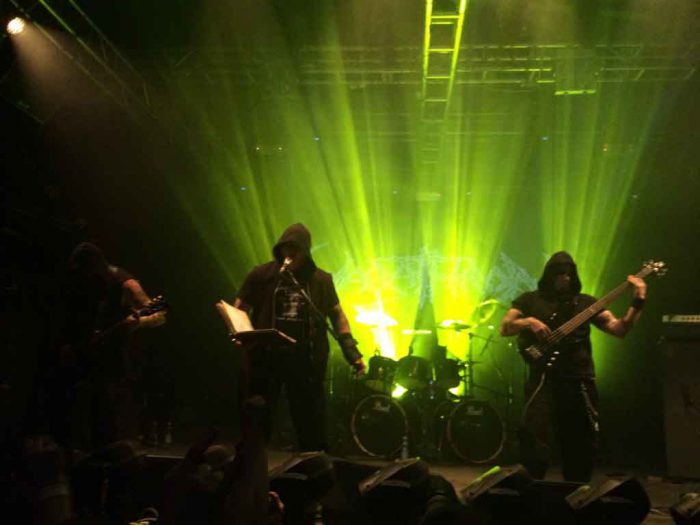
Toxicology report: Mysticum: *Journalist’s disclaimer – order of events may have played out slightly differently than reported – notes were not taken during the actual performance, but recalled from cottony memory* Twin streams of quicksilver lashed the crowd as the techno triumvirate of Cerastes, Prime Evil, and Dr. Best took to the stage. Nineteen years elapsed since this dystopian nightmare last synthesized an audience into freebased crystallized human waste. I had grave doubts about whether this band would be anything interesting live. Idols are often deflating in situ, and although their demos and first album were good, the production levels often made the backtrack sound like bubble paper being stomped on by Japanese girls in platforms. All fears were allayed as the thumping horror of “Black Magic Mushrooms” battered the audience and surreal monochromatic strobewar of lights blistered our retinas. The light show and visuals were truly unique throughout a performance interestingly heavy on tracks from the new “Planet Satan” release, including “Lucifer in the Sky with Demons,” “All Must End,” and my personal favorite, “The Ether.” On the screen, forms morphed from chemical compounds of LSD and other intoxicants, to Nazi soldiers, to skulls and swirling maelstroms of insanity. A paralyzing early intermezzo left the crowd confused and disoriented, after which “Crypt of Fear’s” ominous intro shook them into hysteria. Mysticum left no room for error: they are back to stay, and dominate. 100% pure satanic peyote!
Epilogue: Starting at a flat line
The shuttle bus at the airport is rooted to the ground. Won’t move anywhere. The heater is up way too high. I’m roasting in morkkis, a Finnish term for a kind of hideous hangover defined by creeping dread and a sense of, well, mortification. One poor soul we interviewed might best sum up the atmosphere of the entire festival. He was hobbling around on crutches. When asked what transpired, he confided that early on in the show, he and some colleagues had taken a few doses of LSD. Having come down into a troubled, drug addled sleep he was jolted awake by a fellow reveler, who had hallucinated that the police were raiding their dwelling. His immediate reaction was to jump from the upper story window down to a painful and humiliating full stop below. Morkkis. The human condition is low indeed. Yet I am buoyed by the knowledge that even if most of what moved this reporter was music penned two decades ago, it was a zenith of human achievement, and which could have only been commemorated by the bacchanalian Black Flames of Blasphemy.
11 CommentsTags: black flames of blasphemy, Black Metal, blasphemy, death metal, debauchery, guest author, live shows, mysticum, varathron
